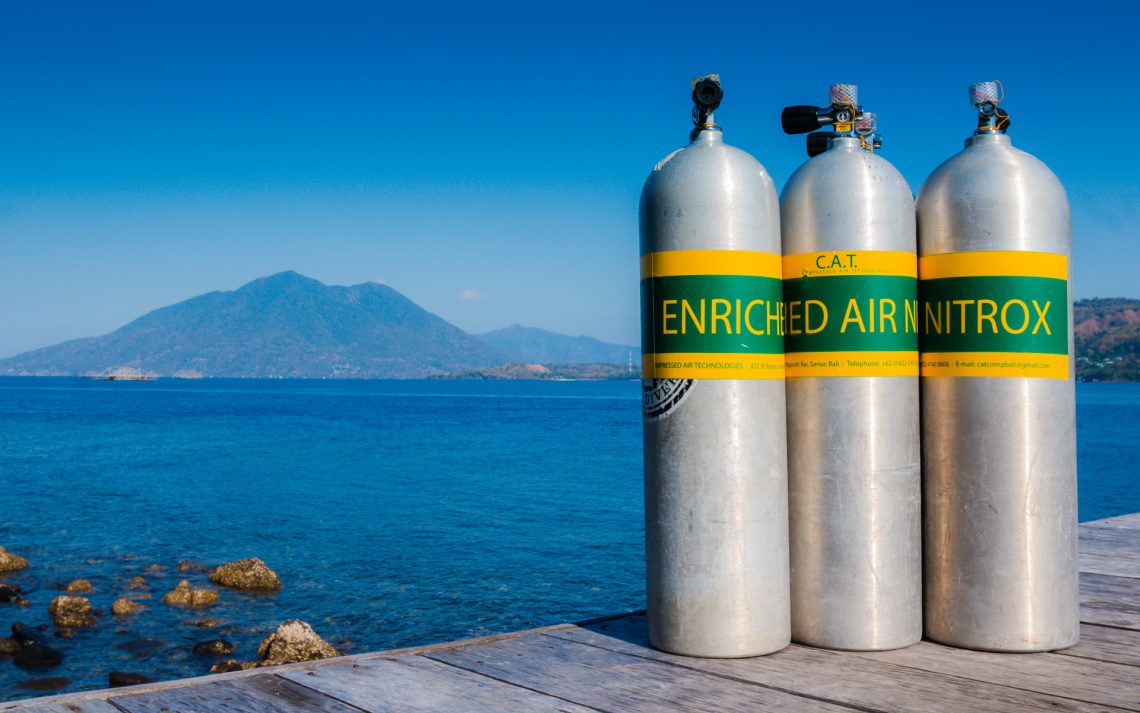
What is Nitrox in diving?
In recreational diving, breathing Nitrox (or Enriched Air Nitrox) instead of air is a great way to extend your diving No Decompression Limit (NDL). This means that you can dive for longer, exploring a certain wreck or taking photos.
Firstly, what is air?
Air consists of ~21% oxygen, ~78% nitrogen and 1% other gases. In diving, the 1% of other gases is relatively insignificant and so in most calculations, we generalise nitrogen as representing ~79% nitrogen. Air with 21% oxygen is the most commonly used gas in diving.
What’s the difference between air and nitrox?
Nitrox is not a single ratio of gasses – in fact, it’s any combination of oxygen and nitrogen that isn’t 21% oxygen and 79% hydrogen.
For recreational diving, nitrox mixes between 22% and 40% oxygen are used. We can also go all the way up to 100% oxygen, but these mixes are typically used in decompression (technical) diving. When we see “Nitrox 32”, this means the gas is 32% oxygen, and therefore 68% nitrogen.
Whilst our body has no use for nitrogen (which is an inert gas), our tissues absorb some of it whilst diving. The amount of nitrogen we have absorbed directly affects how much time we can stay under water (at depth) and how much time we need to have between dives (surface interval).
Diving with nitrox reduces our risk of decompression sickness
If there’s less nitrogen in the gas we breathe whilst diving, we can safely extend our diving bottom time compared to breathing air at the same depth. For example, a diver’s NDL at 20m on air is 45 minutes. With Nitrox 32, it’s 60 minutes.
Additionally many divers also feel less post-dive fatigue. However, oxygen can be toxic if not handled carefully. Therefore there are limits to how deep you can safely dive with nitrox.
This can be calculated with the help of Dalton’s Triangle. Check out our Beginner’s Guide to Nitrox & Dalton’s Triangle for more.
Common Misconception
Many people incorrectly believe that diving with nitrox means you breathe less gas and hence and can dive for longer. This is not true! Typically newer divers consume more gas underwater and often run out of gas before hitting their no decompression limit. Newer divers should therefore enjoy diving & practicing with air before starting with Nitrox.
How do I start diving with Nitrox?
Get certified! It’s important to truly understand the benefits & limitations of safe nitrox diving, through training. Dive shops will require proof of certification before filling nitrox for you. Nitrox is one of the most popular speciailty diving agencies offer. For example, Enriched Air Diver with PADI or Computer Nitrox Diver with SDI.